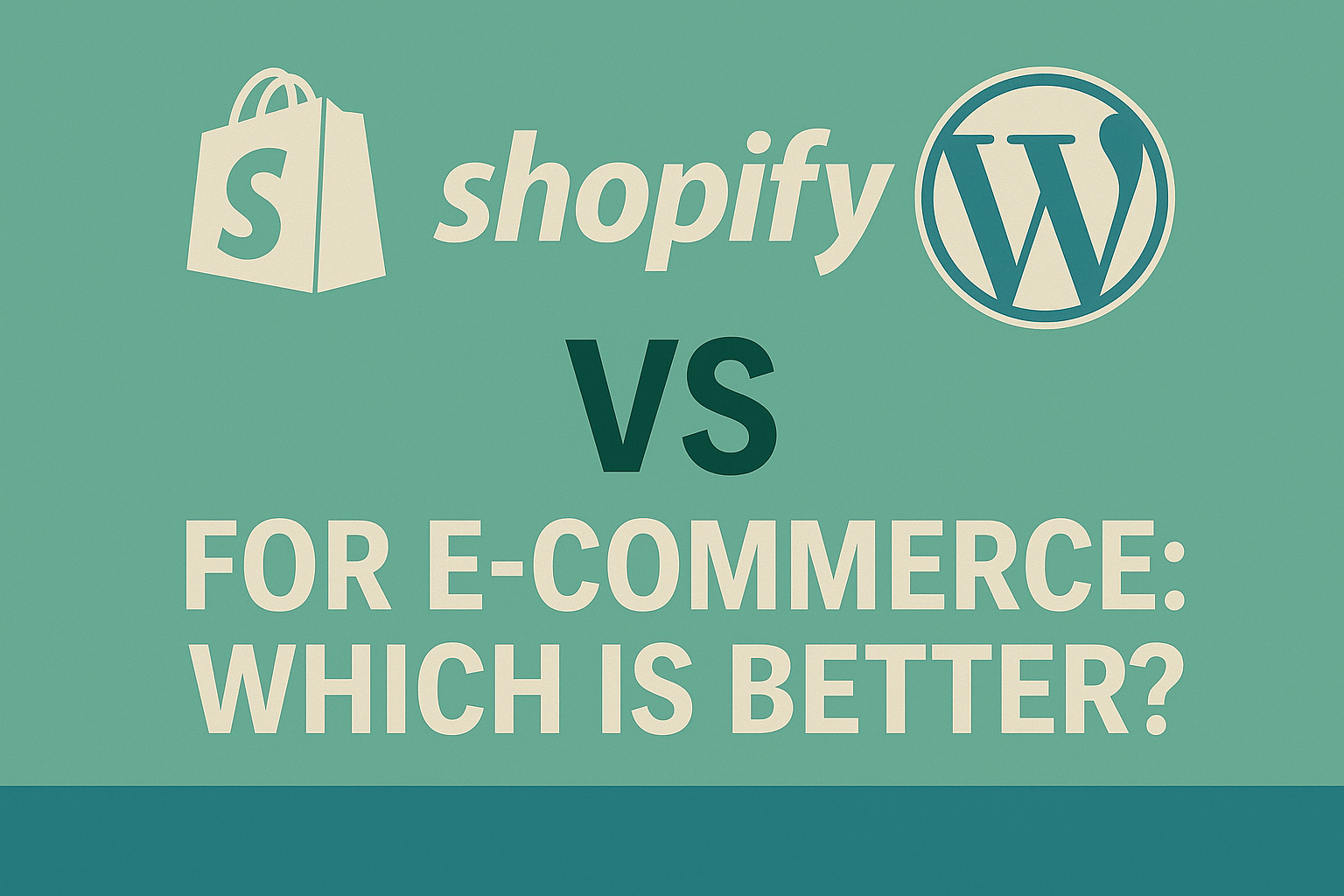Choosing the right platform for your online store can make or break your e-commerce journey. At BlogHush.com, I’m here to help you decide between Shopify and WordPress with a clear, beginner-friendly comparison. With 15 years of experience in Shopify, WordPress, and SEO, I’ve guided many small business owners and bloggers in building successful online stores. Whether you’re launching a new shop or adding a store to your blog, this guide will break down the pros, cons, and key differences of Shopify vs. WordPress for e-commerce in 2025. Let’s dive in!
Why Compare Shopify and WordPress for E-Commerce?
Both Shopify and WordPress are popular platforms for building online stores, but they cater to different needs. Shopify is an all-in-one e-commerce solution, while WordPress (with plugins like WooCommerce) offers more flexibility for customization. Shopify reports over 1 million businesses using its platform, while WordPress powers 40% of websites globally (W3Techs), making them top choices for e-commerce.
Shopify vs. WordPress: Key Differences
1. Ease of Use
- Shopify: Shopify is designed specifically for e-commerce, making it incredibly user-friendly. You can set up a store in just a few hours using its intuitive dashboard. For a detailed walkthrough, see our guide on How to Set Up Your First Shopify Store.
- WordPress: WordPress requires more setup, including choosing hosting, installing a theme, and adding plugins like WooCommerce. It has a steeper learning curve but provides greater control over your site. Check out our guide on How to Start a WordPress Blog to get started.
- Winner: Shopify for beginners; WordPress for those comfortable with customization.
2. Cost
- Shopify: Plans start at $39/month (Basic Shopify plan), which includes hosting, an SSL certificate, and customer support. Additional costs may come from apps and transaction fees (2.9% + 30¢ per transaction if you don’t use Shopify Payments).
- WordPress: The WordPress software (WordPress.org) is free, but you’ll need hosting (e.g., SiteGround at $3.99/month [Insert SiteGround affiliate link here]) and a domain (~$12/year). WooCommerce is free, but premium plugins or themes can add costs.
- Winner: WordPress for budget-conscious users; Shopify for predictable all-in-one pricing.
3. Customization
- Shopify: Shopify offers a variety of themes and apps, but customization is more limited compared to WordPress. You can tweak themes using Shopify’s editor or modify Liquid code for specific changes (e.g., adding variant descriptions, as in Add Variant-Specific Descriptions).
- WordPress: With plugins like Elementor and WooCommerce, WordPress offers nearly unlimited customization. You can design your store exactly as you envision and add features through plugins.
- Winner: WordPress for flexibility; Shopify for simplicity.
4. SEO Capabilities
- Shopify: Shopify includes built-in SEO features like editable titles, meta descriptions, and automatic sitemaps. However, it’s less flexible for advanced SEO techniques. For more on this, see our Shopify SEO Guide.
- WordPress: WordPress shines with SEO plugins like Rank Math, offering advanced features such as schema markup and detailed optimization options. Learn more in our WordPress SEO Guide.
- Winner: WordPress for SEO control; Shopify for basic SEO needs.
5. E-Commerce Features
- Shopify: Built specifically for e-commerce, Shopify includes payment processing, shipping tools, and inventory management right out of the box.
- WordPress: Requires the WooCommerce plugin to enable e-commerce features like payment gateways and shipping, which means a bit more setup but offers flexibility.
- Winner: Shopify for built-in e-commerce features; WordPress for versatility.
Insert Image: Comparison table of Shopify vs. WordPress features.
Which Platform Should You Choose?
- Choose Shopify If: You want a quick, all-in-one solution with minimal setup. Shopify is ideal for beginners who prioritize ease of use and built-in e-commerce tools.
- Choose WordPress If: You need flexibility, lower costs, and advanced customization. WordPress is perfect for those who are comfortable with a bit of setup and want full control over their store.
What’s Next?
Now that you’ve compared Shopify and WordPress, it’s time to start building your store. If you’re leaning toward Shopify, check out How to Set Up Your First Shopify Store. If WordPress feels right, dive into How to Start a WordPress Blog. Stay tuned to BlogHush.com for more e-commerce tips!

Leave a Reply